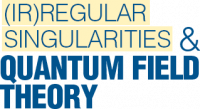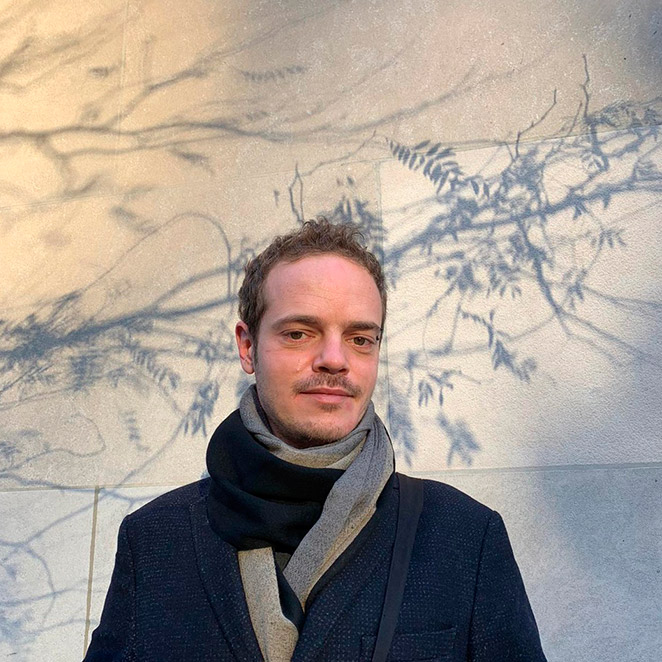Stefano Negro
Stefano Negro is a post-doctoral researcher in theoretical and mathematical physics. He obtained the Master in Theoretical Physics in 2010 at the University of Turin (Torino, Italy), under the supervision of Ferdinando Gliozzi, and the Ph.D. in Theoretical Physics in 2014 at the University of Turin (Torino, Italy), under the supervision of Roberto Tateo and Fedor Smirnov. During the course of his Ph.D. he participated in a joint-supervision project with the LPTHE — Laboratoire de Physique Théorique et Hautes Energies, Pierre et Marie Curie University (Paris, France). Also, during 2014 he has been an Early Stage Researcher in the framework of GATIS (Marie Curie Initial Training Network) at Durham University (Durham,UK), under the supervision of Patrick E. Dorey.
In 2015, he moved to the Group of Theoretical Physics of the École Normale Supérieure (Paris, France), where he has been working alongside Vladimir Kazakov until the end of 2016. Subsequently, he has held a three-years-long position as a Post-Doctoral Associate at the C.N. Yang Institute for Theoretical Physics, SUNY (Stony Brook, U.S.), where he worked in close contact with Alexander Zamolodchikov. He is currently a Post-Doctoral Associate at the Center for Cosmology and Particle Physics at the NYU (New York, U.S.), in the High Energy Theory group led by Sergei Dubovsky, Gregory Gabadadze and Massimo Porrati.
He is an expert in the methods of integrability which he has applied to various aspects of theoretical physics. He has mainly worked on the following topics:
- 1. Irrelevant Deformations of 2D Quantum Field Theories. He introduced — together with his collaborators Andrea Cavaglià , István Szécsényi and Roberto Tateo — the $\mathrm{T}\overline{\mathrm{T}}$ deformation in a paper (arXiv: 1608.05534) which appeared simultaneously with a work on the same subject by Alexander Zamolodchikov and Fedor Smirnov (arXiv: 1608.05499). He subsequently gave a geometric interpretation of the $\mathrm{T}\overline{\mathrm{T}}$ deformation and introduced and analysed several generalisations, which are collectively known as CDD deformations (see arXiv: 1806.11515, 1809.09593, 1904.09141, 1911.12233).
- 2. Fishnet Theories. Together with Nikolay Gromov, Vladimir Kazakov, Gregory Korchemsky and Grigory Sizov, he thoroughly investigated (see arXiv: 1706.04167) the integrability structure of the $4$ dimensional fishnet theory — also known as $\chi$FT$_4$ — recently introduced in arXiv:1512.06704. He arrived at the non-perturbative computation of the scaling dimensions of a large class of observables. More importantly, there he laid the algebraic groundwork necessary for the extension of the analysis to more complicated example of observables, to fishnet theories in different dimensions — mainly $3$ and $6$ — and to $1$ and $2$ parameters integrability-preserving deformations of these.
- 3. The ODE/IM Correspondence. In his Ph.D. Thesis and in the work arXiv: 1209.5517 he extended the massive ODE/IM correspondence — at the time limited to the case of the affine algebra $\hat{\mathfrak{sl}_2}$, equivalently the sinh-Gordon model — to the family of affine Toda field theories based on simply laced affine Ka{\v c}-Moody algebras. He also presented (see arXiv: 1911.13290) a geometric interpretation of the correspondence in terms of surfaces embedded in higher-dimensional spaces and applied this perspective to the computation of light-like polygonal Wilson loop in the context of AdS/CFT correspondence.
- 4. The Fermionic basis. Together with Fedor Smirnov, he extended the applicability of the fermionic basis approach to the computation of one-point functions at finite temperature in the the sinh-Gordon model (see arXiv: 1304.1860, 1306.1476, 1404.0619).
Selected publications
- Andrea Cavaglià, Stefano Negro, István Szécsényi and Roberto Tateo "$\mathrm {T}\overline {\mathrm {T}}$-deformed 2D quantum field theories." Journal of High Energy Physics 2016.10 (2016): 112.
- Nikolay Gromov, Vladimir Kazakov, Gregory Korchemsky, Stefano Negro, and Grigory Sizov. "Integrability of conformal fishnet theory." Journal of High Energy Physics 2018.1 (2018): 95.
- Stefano Negro and Fedor Smirnov. "On one-point functions for sinh-Gordon model at finite temperature." Nuclear Physics B 875.1 (2013): 166-185.
- Patrick Dorey, Simone Faldella, Stefano Negro, and Roberto Tateo. "The Bethe ansatz and the Tzitzéica–Bullough–Dodd equation." Philosophical Transactions of the Royal Society A: Mathematical, Physical and Engineering Sciences 371.1989 (2013): 20120052. m {T}\overline {\mathrm {T}}$-deformed 2D quantum field theories." Journal of High Energy Physics 2016.10 (2016): 112.


